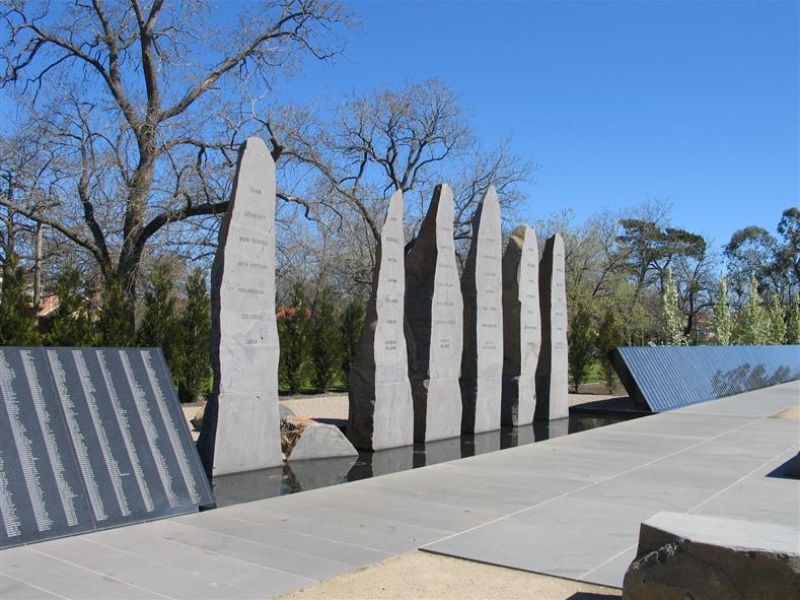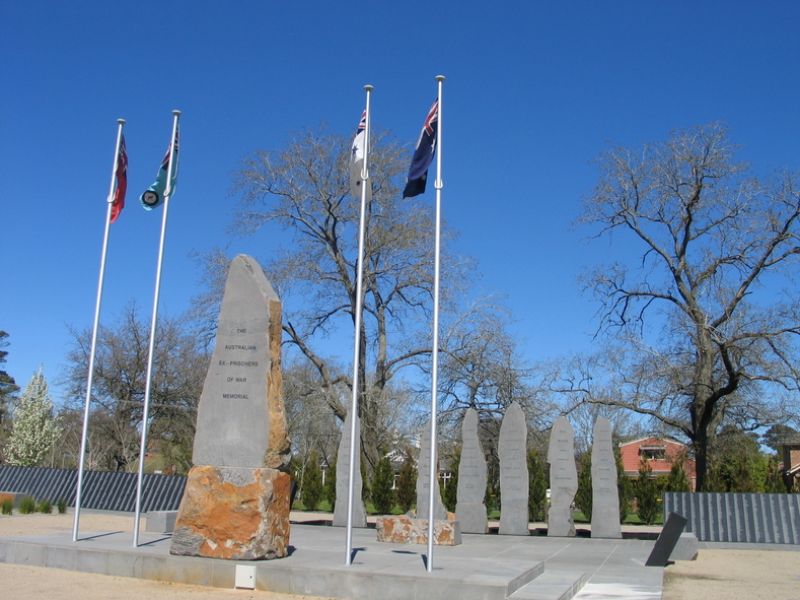Binding all Australian Prisoners of War together for all time
This memorial to Australian Prisoners of War takes the observer on a journey. More than 36,000 Australian men and women were held captive as prisoners by the enemy during the Boer War, World War 1, World War 2 and the Korean War. This memorial honours them. There were no Australian prisoners of war in the Vietnam War.
The journey begins on a long pathway, emphasising the great distance Australians travelled to war. The paving stones that form a pathway are shaped like railway sleepers in recognition of the iconic place of railway journeys in the history of Australian POWs.
A roll of names of all known Australian prisoners of war is etched into a black granite wall lying parallel to the pathway. The roll gives no rank, number or enlistment detail. In recognition that sacrifice, suffering and desperation acknowledged no person's status. These men and women are equals. In a break in the wall a row of stone obelisks stands sentinel in a shallow pool of water. Each bears the names of countries where Australians were held as prisoners of war.
The obelisks are out of reach across the water, symbolising that all the prison camps were overseas, far from home and the comfort of family and friends. The size of each obelisk and their position in the water creates a powerful image and offers a place for reverence and reflection. The obelisks form a silent line of guardians watching over the POWs for ever.
The fallen stone honours all those men and women who died as prisoners of war. The roll of names on the granite wall continues towards a large stone at the end of the pathway. The stone rests on a small granite wall and bears the timeless instruction 'Lest We Forget'. This is the end of the journey – an intimate space for contemplation.
Water springs from beneath the 'Lest We Forget' stone then flows down the wall into the narrow watercourse in front of the first group of names and into the reflective pool, then continues past the second group of names. Finally it disappears under the pathway, returning to its source under the 'Lest We Forget' stone to start the journey again. Water symbolizes the essential nature of man, sacrifice, suffering, spirituality, healing, cleansing, birth and re-birth. In this memorial it forms a continuous cycle, binding all Australian prisoners of war together for all time.
The memorial is created from natural materials and is designed to be in harmony with the Ballarat Botanical Gardens, and to create a sense of timeless, dignity and respect.

 Faithe Jones
Faithe Jones